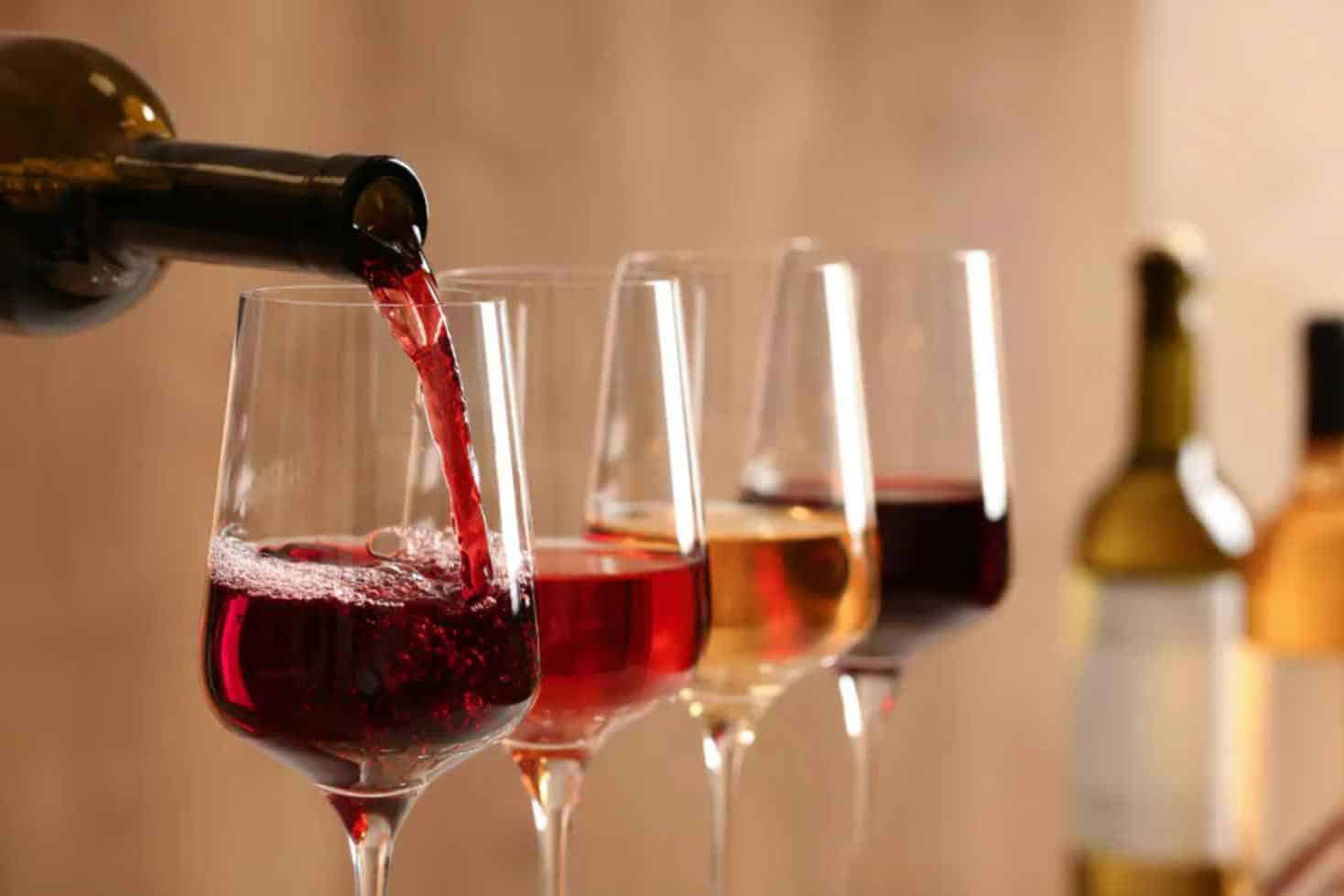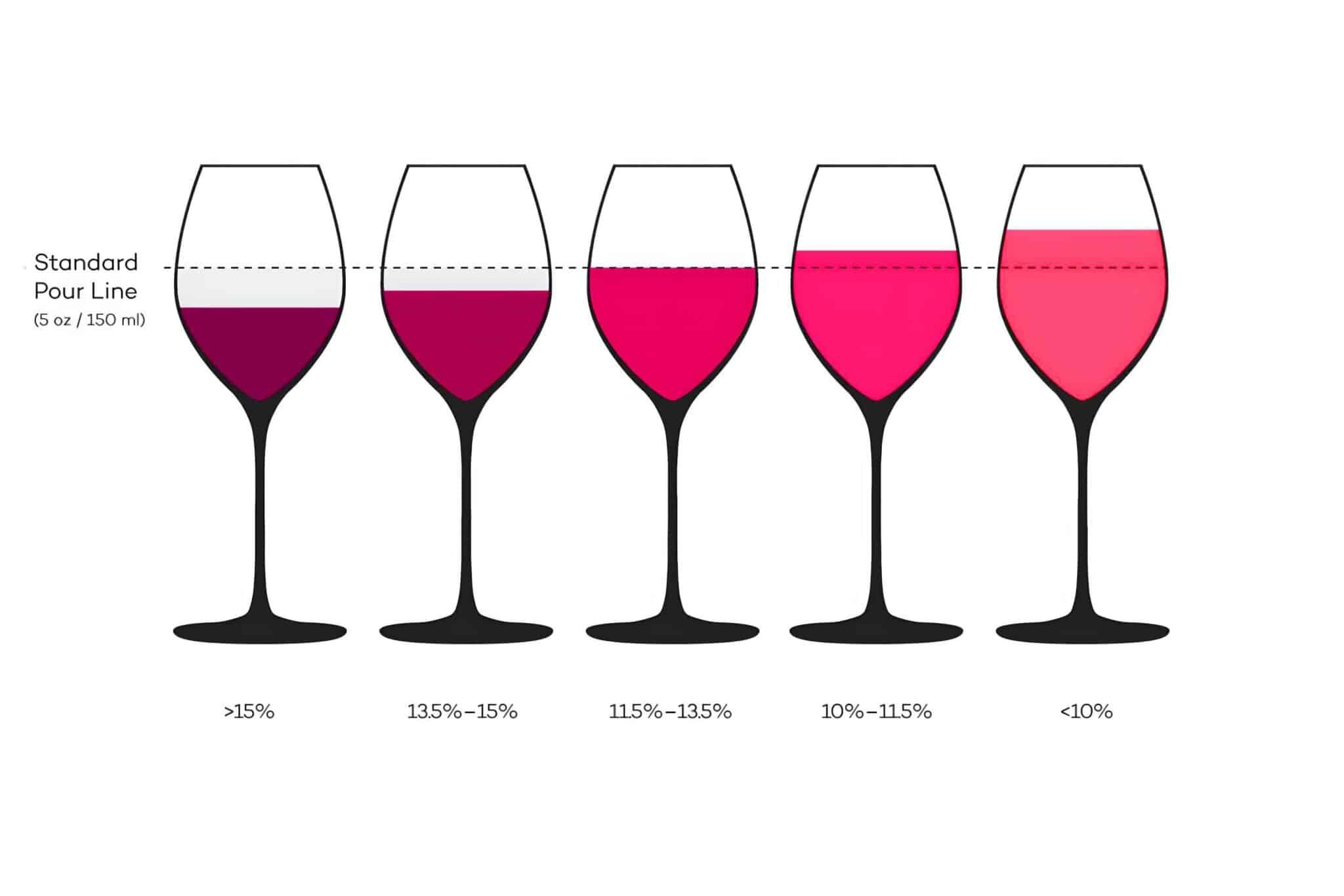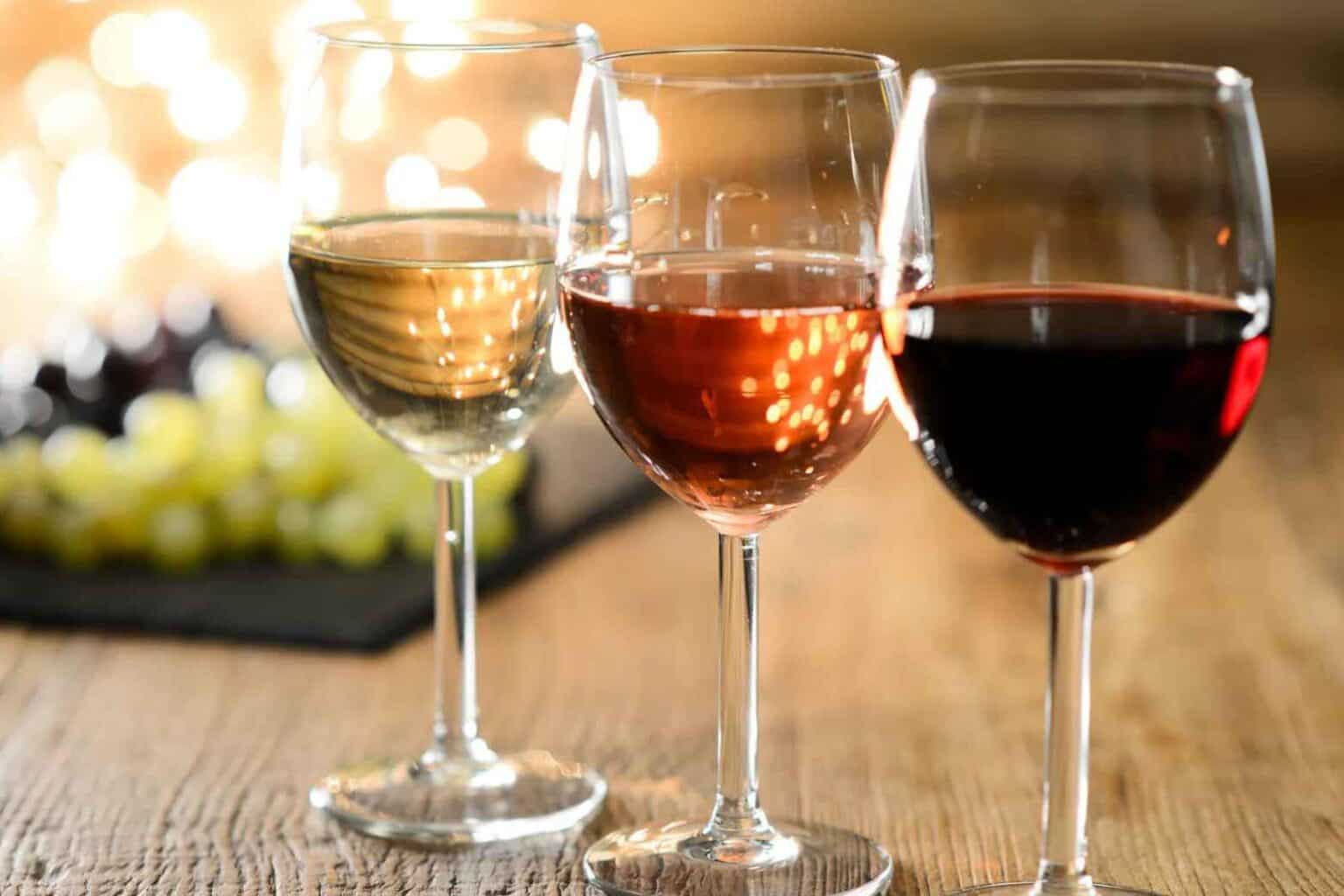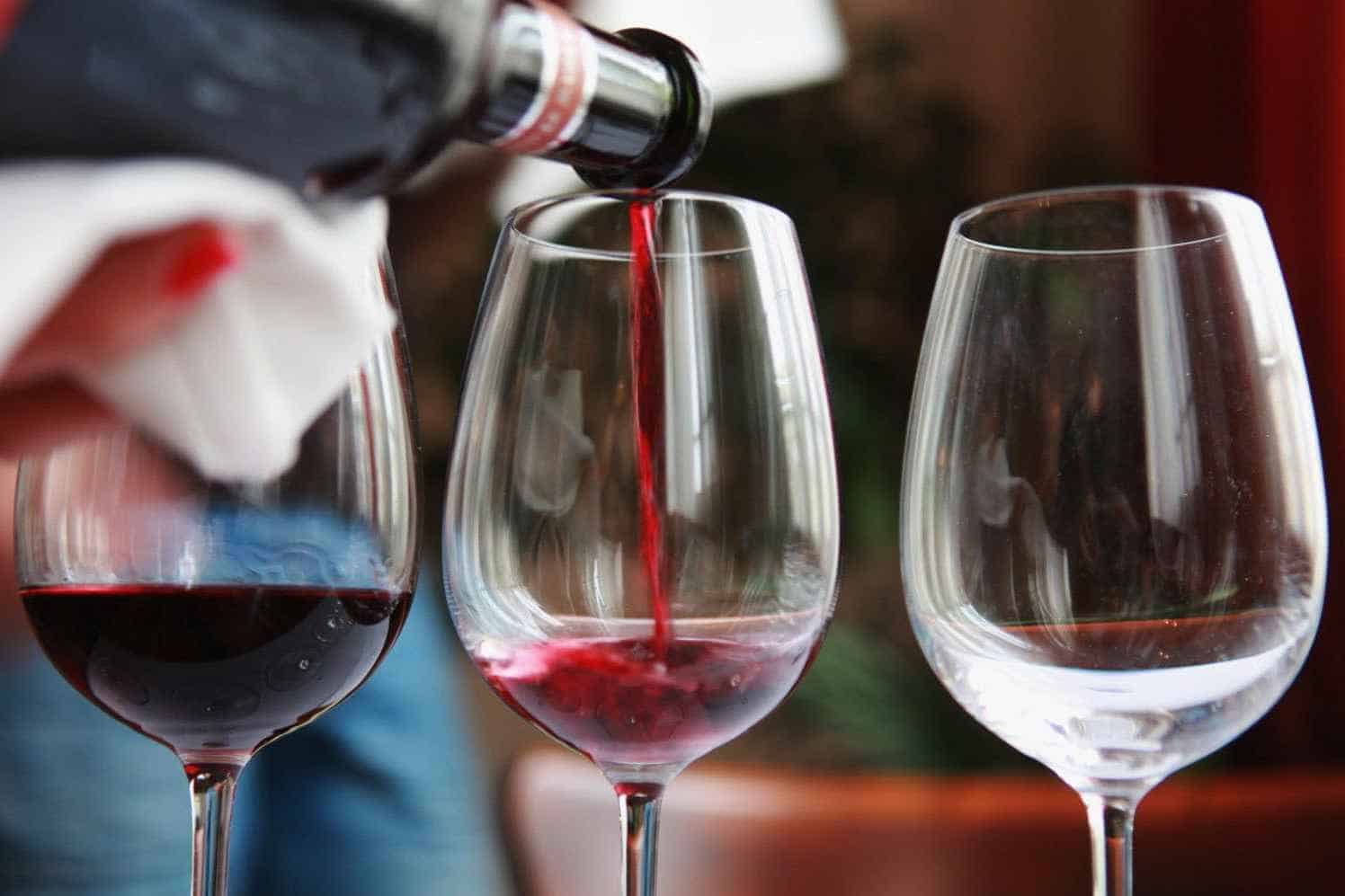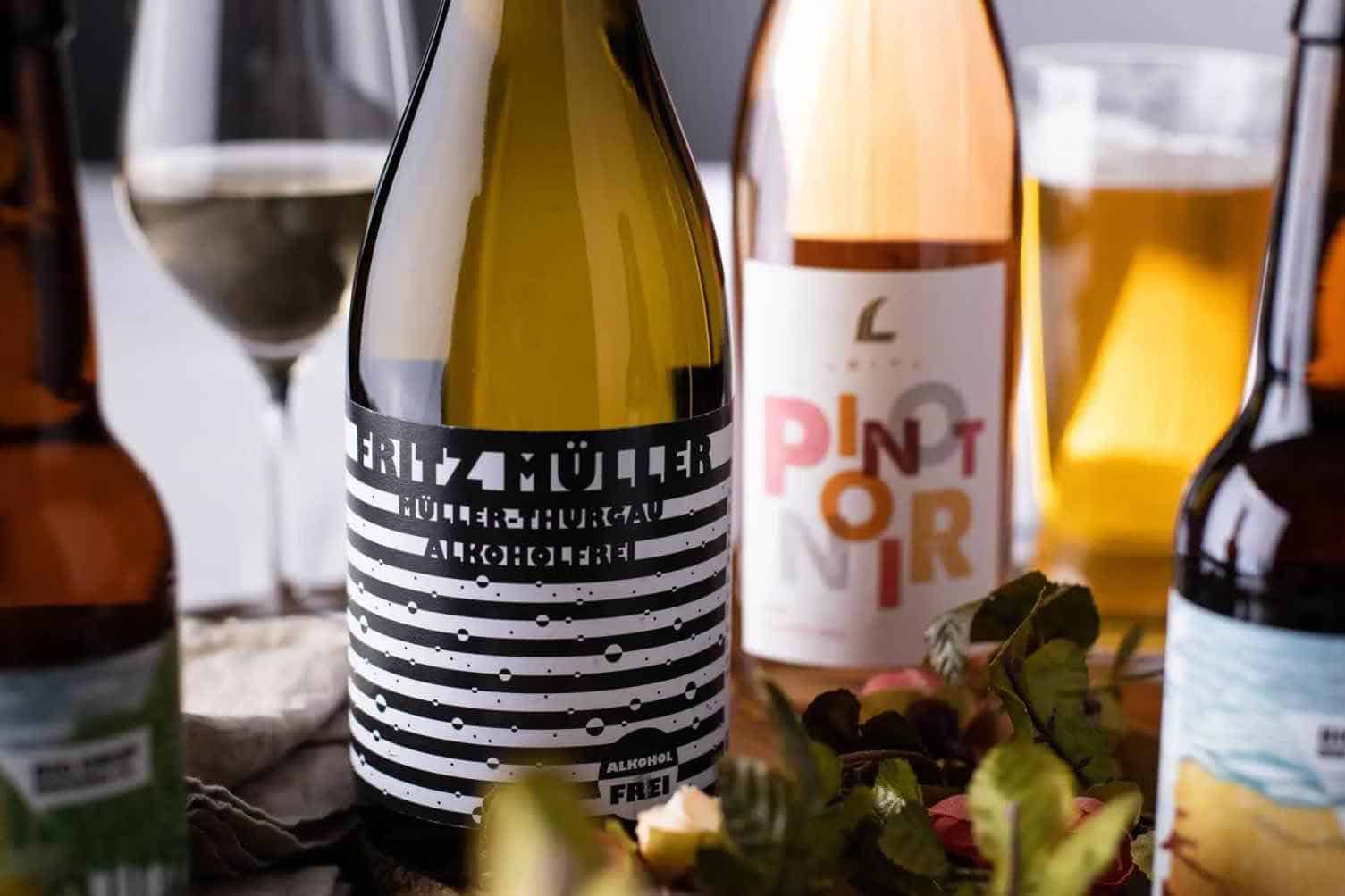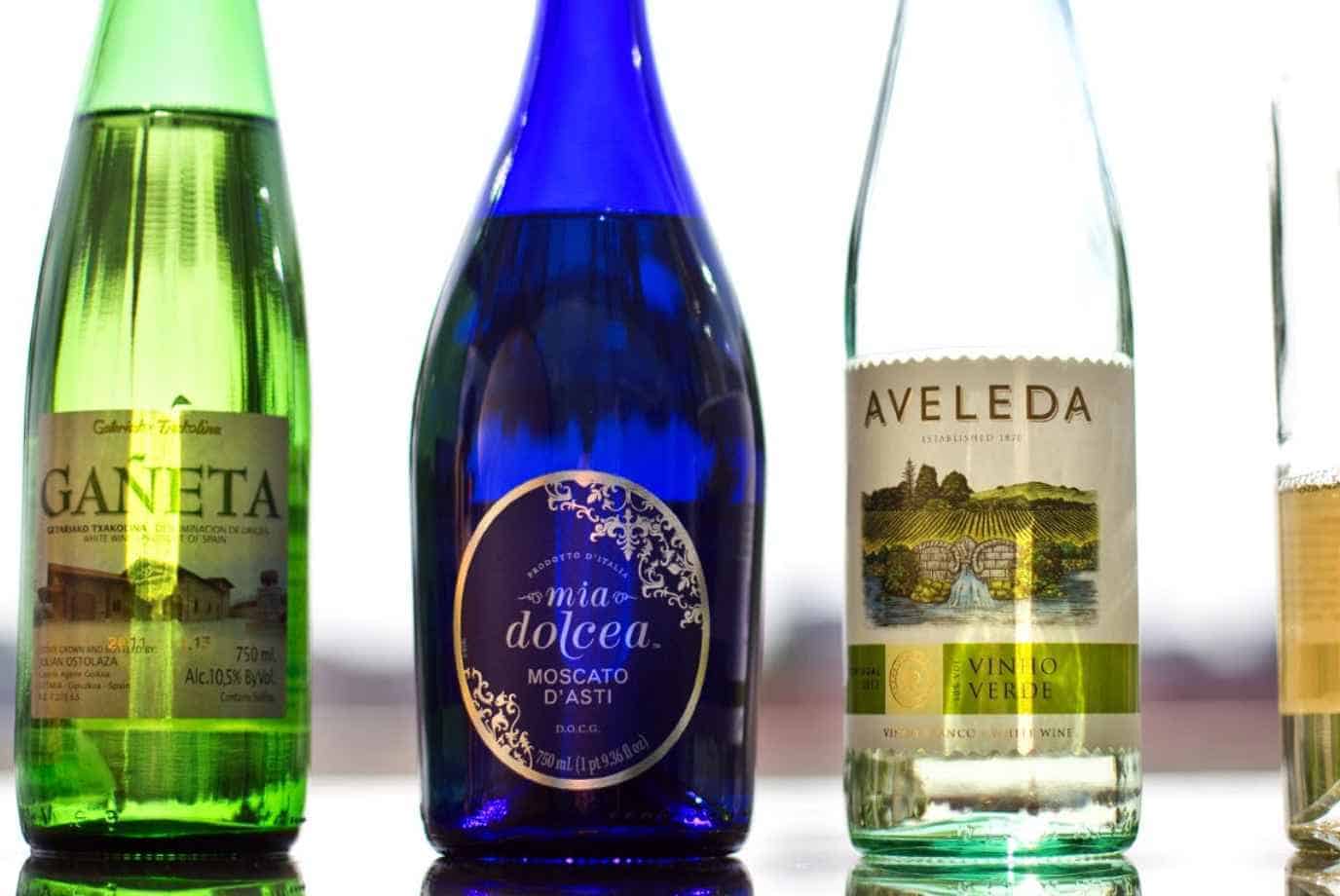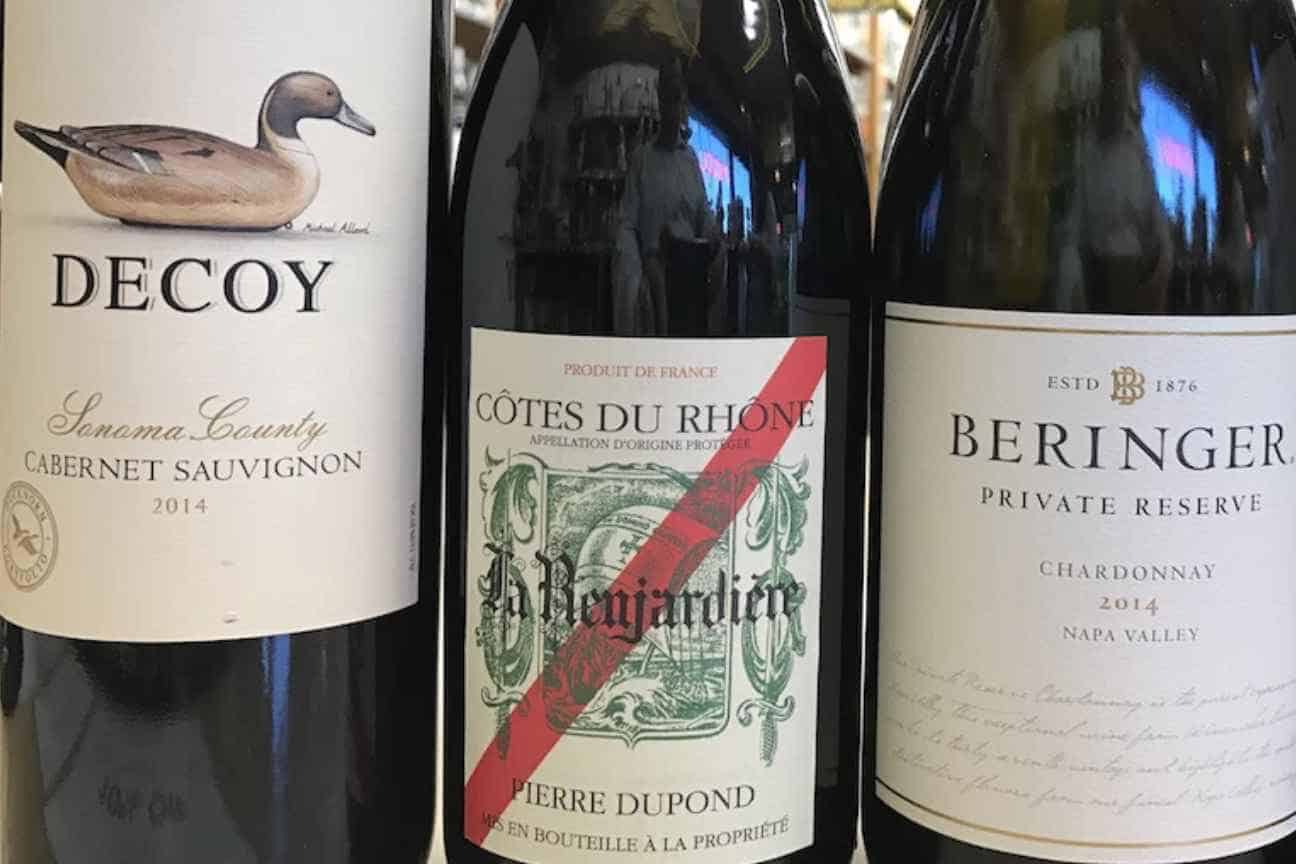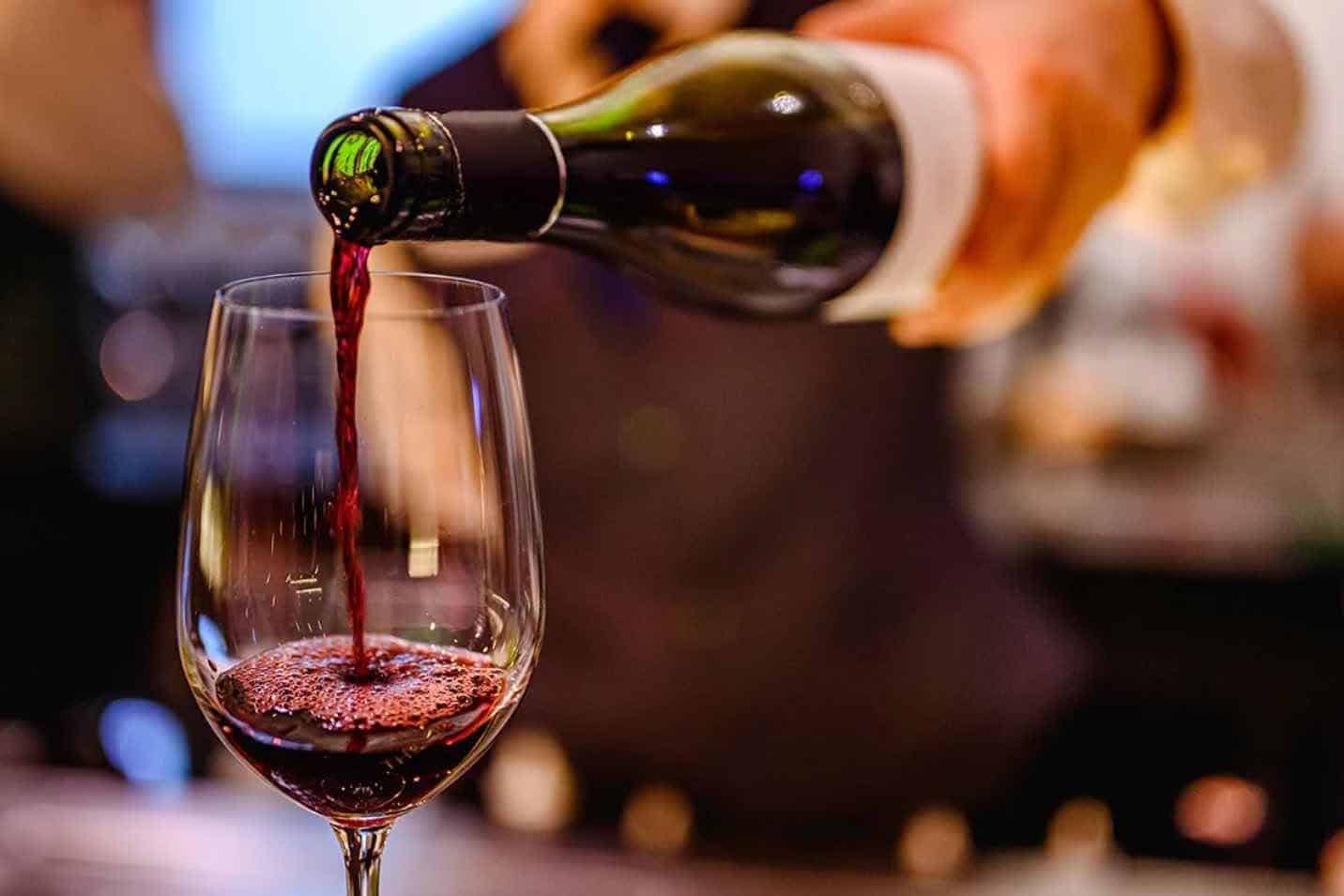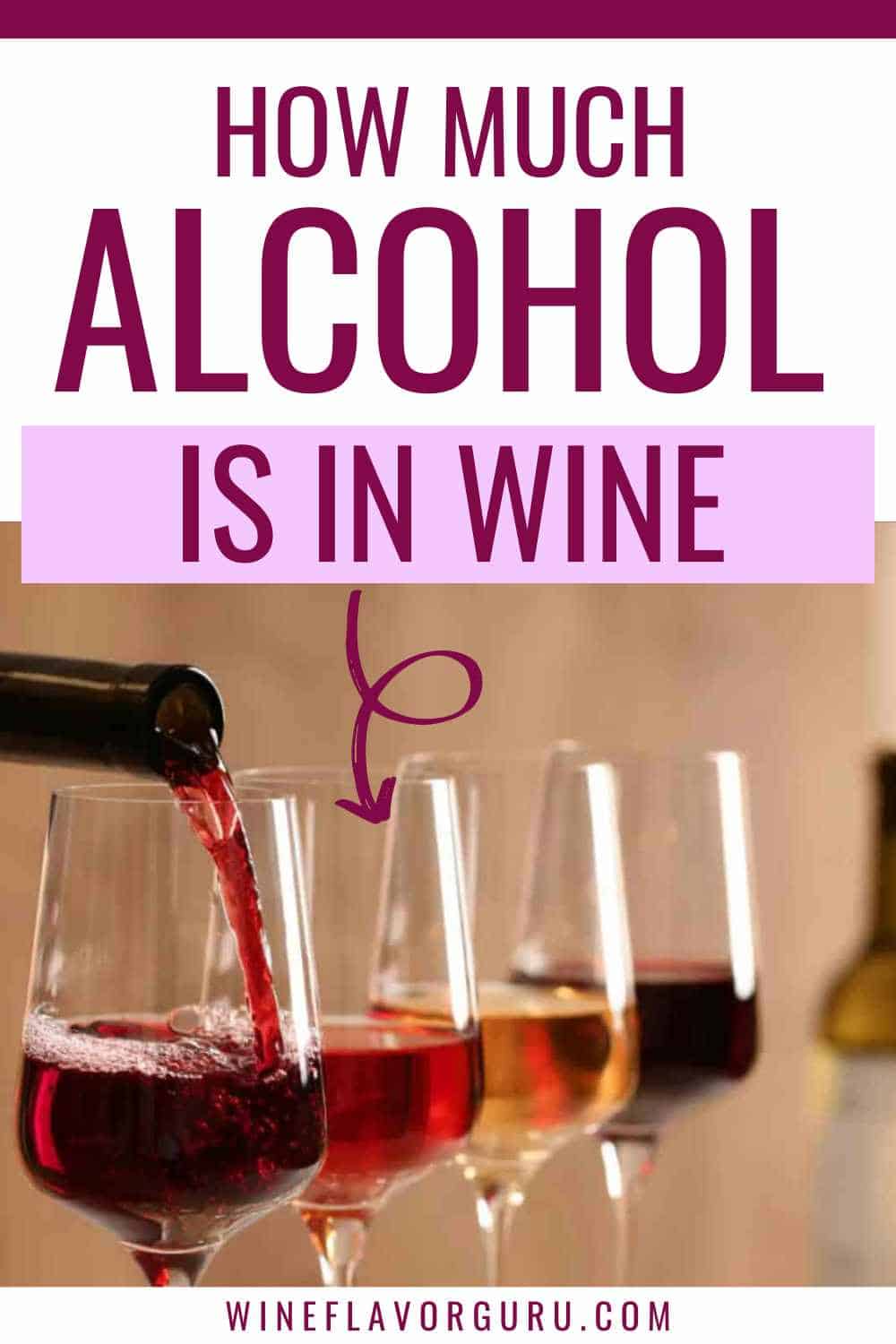You can choose wine more wisely if you are aware of the wine’s alcohol concentration. This way, you can determine how much you should drink and what wine is best for the event. This will also help you become aware of the effects of drinking on you. Thus, it’s important to know how much alcohol is in wine.
Alcohol Content in Wine
The wine industry is vibrant and varied. All three aspects—appearance, taste, and strength are open to variation.
Even the age of the wine is an important factor to consider while attempting to comprehend the complexities of wine. Therefore, the amount of alcohol in a drink is another useful information that can help you make more wise decisions.
Alcohol by volume (ABV) is the measurement method for determining the percentage of alcohol contained in a beverage.
This statistic indicates what proportion of the total volume of the beverage is composed of pure alcohol. Therefore, it is essential to be familiar with the alcohol by volume (ABV) content of alcoholic beverages.
This is particularly true if you are in the process of launching a new bar or brewery and intend to produce your alcohol. Getting familiar with ABV is also good if you are someone who watches your alcohol consumption.
Understanding alcohol by volume (ABV) and how it impacts drinks is essential to maintaining a safe drinking environment. This is also because even minute variances in ABV can affect factors such as flavor and the likelihood of becoming intoxicated.
Average Alcohol Content in Wine
The amount of alcohol in wine can vary depending on the type of wine. Alcohol level depends on the winemaker and the intended alcohol by volume (ABV). However, on average, wine has 12% alcohol content.
Even among wines that belong to the same family, there may be variations in the amount of alcohol present. These can be because of various factors but usually due to the geographic region of the vineyard and brewery.
If you find bottle shock in wine, you will notice the wine’s alcohol content is more pronounced than usual. This is certainly not due to a rise in ABV; rather, the flavors have become less potent.
On the other hand, you might perceive aged wine as having a smoother or mellower alcohol presence. However, aging doesn’t significantly change the alcohol content; it primarily affects the wine’s flavor profile.
When it comes to alcohol concentration, there are broad differences. And so, it’s helpful to examine the various types. But, in general, the higher the alcohol percentage of the wine, the denser the wine will be.
Red wine
The typical range for red wine’s alcohol level is between 12% and 15%. If you are curious about the average alcohol by volume for red wine, it’s 13.5%.
The average alcohol concentration of red wines is typically higher than their white wine equivalents. This is because red wines are produced from grapes picked later in the growing season, giving them a fuller color and compact sweetness.
Since these grapes have a higher sugar content than those used to make white wine, the fermentation process results in higher alcohol content.
In addition, the fermenting process causes a larger concentration of tannins in red wine. This is also why red wines have a significantly deeper hue.
White wine
White wine can have an alcohol percentage anywhere from 5% to 14%, although it has a 10% alcohol by volume content on average. This is because white grapes picked earlier and allowed to ripen further have a lower sugar content than darker grapes.
This sugar also has a slower conversion rate when it comes to ethanol. This is what imparts a pleasant sweetness to white wine while still keeping it crisp and refreshing.
Wines: Lightest to Strongest
Before choosing a wine to drink during an event or a casual evening, you might want to know how much alcohol per volume is in the wine before choosing it.
Low Alcohol
Most wines with an alcohol content of less than 10% will consequently be low in the body and have a sweet flavor. The residual sugar in the wine after the required alcohol level has been achieved is responsible for the wine’s tendency toward sweetness. Low-ABV wines include the following:
- Wine coolers
- Italian Moscato d’Asti
- Brachetto d’Acqui
- German Kabinett Riesling
- Light riesling
- Vinho Verde
However, not every listed wine with low alcohol content is produced the same. These wines have undergone different processes, and some processes involve adding sugars or other substances added to them.
When it comes to wine coolers, you can consider them a wine-based beverage. If you are unsure about the quality of the wine you ordered, you might want to consider getting something to drink at the bar that does not contain alcohol.
Medium Low Alcohol
When less sweet grapes are utilized to make wine, the resulting alcohol content of the finished product typically ranges from 10 to 11.5%. Here are some medium-low abv wines.
- Gamay
- Muscadet
- California sparkling wine
- Touraine and Cheverny
- Chianti
- Lambrusco
- Gavi
- Soave
- Pinot Grigio
- Rosé
Medium Alcohol
Medium-bodied wines typically have an alcohol content of between 12.5 and 13%. These include well-known white wines with fuller bodies and red wines with lighter bodies.
- Beaujolais
- Burgundy
- Chianti
- Dolcetto
- Barbera
- Pinot grigio
- Value Reds
- Sauvignon blanc
- Syrah
Medium-High Alcohol
Many of the most popular red wines have an alcohol content of medium-high. The average range is 13.5% to 14.5% alcohol by volume.
- Bordeaux
- Merlot
- Pinotage
- Petite Sirah
- Malbec
- Italian amarone
- Cabernet sauvignon
- Viognier
- Pinot noir
High Alcohol
There are two ways that high-alcohol wines can be produced: spontaneously or with the addition of fortification. Adding a neutral spirit to wine results in the production of fortified wine with a higher percentage of alcohol.
- Shiraz
- Red Zinfandel
- Sherry
- Madeira
- Port
- Banyuls and Maury
- Marsala
Alcohol Content and Flavors in Wine
Yes, a wine’s alcohol content impacts its flavor. Here are three ways the overall alcohol content affects the wine’s flavor.
Harmony
The interaction between a wine’s alcohol, sugar, acid, and tannins create the wine’s flavor profile. And so all of these elements should have the same level of intensity to provide a balanced flavor profile.
For instance, a bottle of red wine with a high tannin content should simultaneously have high alcohol content. This balance in the components ensures that no component dominates the other.
Conversely, a wine lacking in acidity, tannin, and sugar but containing excessive amounts of alcohol will have an unpleasantly hot feel or flavor reminiscent of liquor rather than wine.
Body
The body of wine can be affected by its alcohol content because of the viscosity difference between water and alcohol.
Wines with higher alcohol percentages will, of course, have a fuller and more robust body. On the other hand, wines with lower alcohol percentages will have a more delicate flavor on the tongue.
Perceived taste
An alcohol’s taste can be affected by a person’s genes too. For example, some might accentuate the bitterness or emphasize the sweet sensations experienced when drinking wine.
In fact, individual perceptions of alcohol’s taste can vary. Some might find it sweet, others bitter, while yet others might think it has a neutral flavor.
Wine and ABV Frequently Asked Questions (FAQs)
What type of wine has a stronger alcohol content, white or red?
In a broader sense, red wines tend to contain a higher percentage of alcohol than white wines. The difference is not because of any fundamental changes in the alcohol potential of the grapes themselves but rather to the stylistic decisions made by winemakers.
What is the effect of fermentation on alcohol content?
A wine’s alcohol content depends on the fermentation process, so it’s safe to say that these two are non-negotiables. Grape juice goes through fermentation to become wine.
The fermentation process begins when the yeast Saccharomyces cerevisiae consumes the natural sugars in grape juice. During this reaction, alcohol is produced as a byproduct.
Saccharomyces Cerevisiae will continue to reproduce until the wine has reached the dryness stage of fermentation. This stage then indicates that all of the sugar initially present has been converted into alcohol.
Therefore, the amount of sugar that is present in the most is what ultimately determines the amount of alcohol that is present in the finished wine.
How is alcohol by volume (ABV) measured in wine?
Using an instrument called a wine hydrometer, one can take readings before and after fermentation to estimate the alcohol content in the wine. The first reading should be taken before the fermentation process has begun, and the second reading should be taken after the fermentation process.
Summary
So, how much alcohol is in wine? The answer is fairly subjective and completely dependent on the wine you purchase.
There is no exact answer to this, but there are groups with the same level of ABV. Knowing these things helps classify what type of wine to buy during a specific occasion.

George Moore, co-founder of Wine Flavor Guru, is a charismatic entrepreneur with a rich background in California’s wine industry. Alongside Sylvia, he transformed a Sonoma County vineyard into a source of premium wines. George’s expertise in sourcing exceptional grapes and his approachable style make wine appreciation both accessible and engaging.
